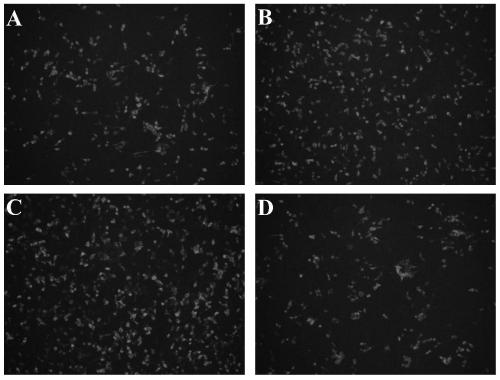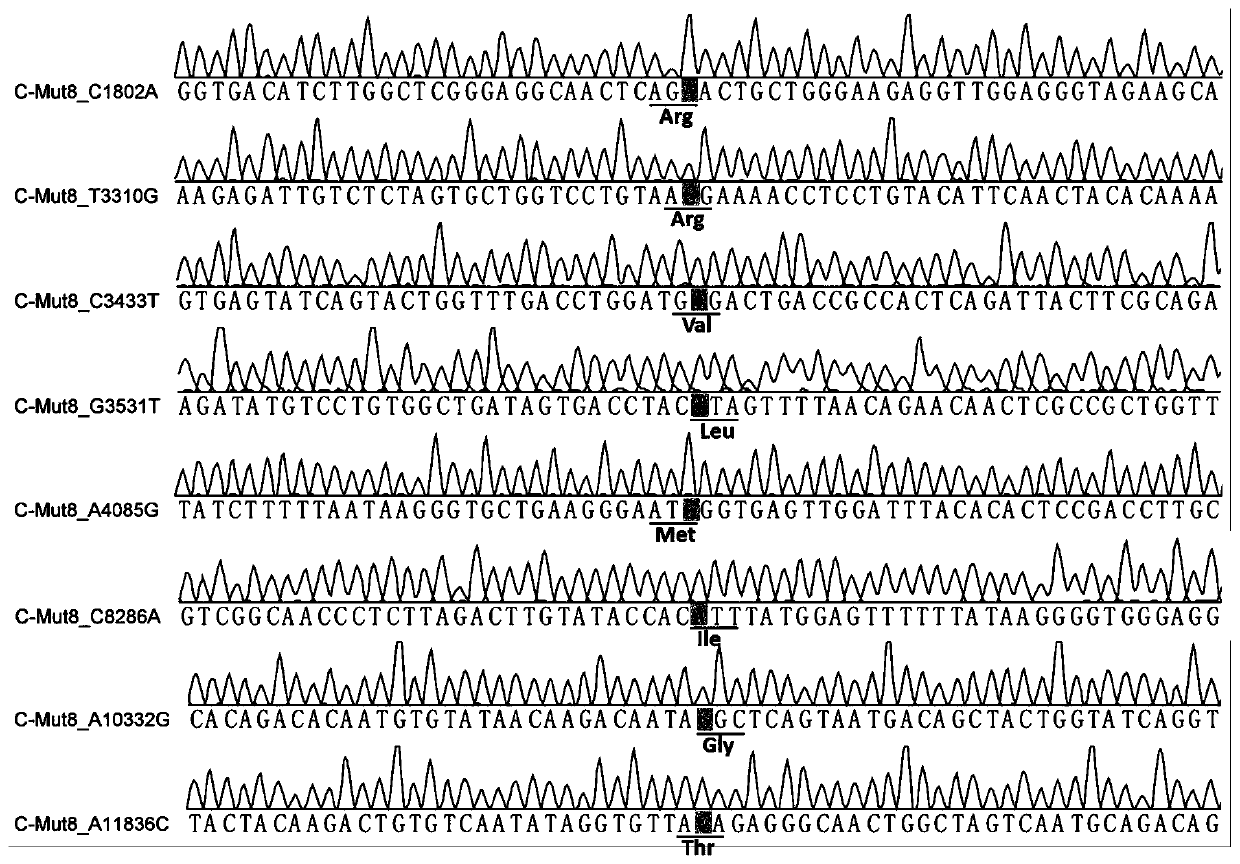A strain of classical swine fever virus with high reproductive capacity and its construction method
A swine fever virus and capability technology, applied in the directions of viruses, antiviral agents, viruses/phages, etc., can solve the problems of slow growth of swine fever attenuated vaccine strains, low virus prices, and high vaccine production costs, so as to improve the success rate of virus rescue. , reduce production costs, improve the effect of cell adaptability
- Summary
- Abstract
- Description
- Claims
- Application Information
AI Technical Summary
Problems solved by technology
Method used
Image
Examples
Embodiment 1
[0030] Example 1: Specific 8 site mutations on the C strain genome
[0031] Using the infectious clone of attenuated CSFV strain C as a template and C1802A-fwd / C1802A-rev as primers, a linearized plasmid containing the 1802-site mutation was amplified by PCR. Using a one-step directional cloning kit (Vazyme), under the action of recombinase, the linearized plasmid containing the 1802-site mutation was recombined into a circle in vitro to obtain an infectious clone pRecC-C1802A containing the 1802-site mutation.
[0032] Using the plasmid pRecC-C1802A containing the 1802-site mutation as a template and T3310G-fwd / T3310G-rev as primers, a linearized plasmid containing 1802 and 3310-site mutations was amplified by PCR. The linearized plasmid was recombined into a circle in vitro using the recombinase in the one-step directional cloning kit to obtain infectious clones pRecC-C1802A, T3310G containing mutations at 1802 and 3310.
[0033] Using the same method, mutations at position...
Embodiment 2
[0034] Example 2: Rescue of C-strain virus containing specific 8 site mutations.
[0035] Add 1 mL of the overnight cultured bacterial solution into 200 mL of LB medium, add 200 μL of Ampicillin at a concentration of 50 mg / mL at the same time, and expand the culture at 28°C for 16 hours. After the bacterial liquid was collected, the plasmid was extracted with a plasmid purification kit (Promega). After the concentration was determined, the plasmid was digested overnight with restriction endonuclease XhoI (TaKaRa) to obtain a linearized plasmid. Using the purified linearized plasmid as a template, viral genomic RNA (Ambion) was transcribed in vitro.
[0036] After PK-15 cells were digested, they were washed twice with serum-free medium Opti-MEM (Thermo). Mix 2 μg genomic RNA with 2 × 10 6 After the cells were mixed, they were added to a 2mm electroporation cup (Bio-Rad), and electroporation was performed with an electroporation instrument Gene Pulser Xcell (Bio-Rad), paramet...
Embodiment 3
[0038] Example 3: Detection of genetic stability of CSFV-Cmut8.
[0039] After infecting PK-15 cells with CSFV-Cmut8, they were passed on for 30 generations. During this period, each generation of venom was collected and stored in a -80°C refrigerator. After extracting RNA (AXYGEN) from the 1st, 10th, 20th and 30th generation virus and inverting it into cDNA (Vazyme), the genome was divided into 5 segments for full-length sequencing. The sequences of the primers for sequencing are SEQ ID NO.17~SEQ ID NO.26, specifically as shown in Table 2 below. The sequencing results showed that no mutations occurred in the 1st, 10th, 20th and 30th generation poisons, and no back mutations appeared in the specific 8 sites ( image 3 ), indicating that the virus has good genetic stability.
[0040]
PUM
 Login to View More
Login to View More Abstract
Description
Claims
Application Information
 Login to View More
Login to View More - Generate Ideas
- Intellectual Property
- Life Sciences
- Materials
- Tech Scout
- Unparalleled Data Quality
- Higher Quality Content
- 60% Fewer Hallucinations
Browse by: Latest US Patents, China's latest patents, Technical Efficacy Thesaurus, Application Domain, Technology Topic, Popular Technical Reports.
© 2025 PatSnap. All rights reserved.Legal|Privacy policy|Modern Slavery Act Transparency Statement|Sitemap|About US| Contact US: help@patsnap.com



